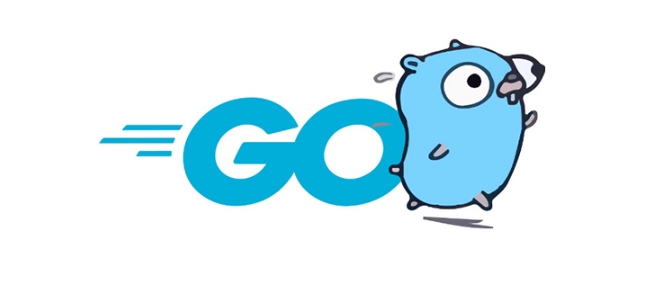The Go compiler transforms source code into a binary through a clear pipeline: parsing converts code into an AST using a hand-written recursive descent parser. 2. Type checking enforces Go’s strong typing via the types package, validating assignments, interface implementations, and generics. 3. The compiler then converts the AST into SSA form for optimization, applying transformations like dead code elimination and function inlining using the ssa package. 4. Machine-specific backends lower SSA to assembly, handling instruction selection and register allocation for architectures like amd64 and arm64. 5. Finally, the Go linker combines object files into an executable by resolving symbols and embedding debug information, all within a self-contained toolchain. Understanding this process helps write efficient code, debug performance issues, and contribute to Go, with tools like GOSSAFUNC and go/ast making internals accessible.

If you’ve ever wondered how a Go program goes from source code to a running binary, the Go compiler’s internals are where that magic happens. Unlike some other language toolchains that feel like black boxes, Go’s compiler is relatively approachable — and understanding it can help you write better code, debug performance issues, or even contribute to the Go project itself.

Here’s a practical look at the key stages and components of the Go compiler, from parsing to machine code.
1. Parsing: From Source Code to AST
The first step in compilation is parsing. The Go compiler takes your .go files and converts them into an Abstract Syntax Tree (AST) — a structured representation of the program’s syntax.

- The parser is hand-written (not generated by tools like yacc), making it easier to debug and modify.
- It uses recursive descent parsing, which closely mirrors Go’s grammar.
- You can explore the AST using the
go/astpackage:
// Example: Print AST of a simple function
package main
import (
"go/ast"
"go/parser"
"go/token"
"log"
)
func main() {
src := `package main; func hello() { println("hi") }`
fset := token.NewFileSet()
node, err := parser.ParseFile(fset, "", src, 0)
if err != nil {
log.Fatal(err)
}
ast.Print(fset, node)
}This stage catches syntax errors and prepares the structure for further analysis.
2. Type Checking and Semantic Analysis
After parsing, the compiler performs type checking. This is where Go enforces its strong typing rules.

- The
typespackage handles inference, method sets, interface conformance, etc. - Type checking happens per package and resolves identifiers, function calls, and assignments.
- This phase ensures things like:
- You can’t assign an
intto astring. - Methods on interfaces are correctly implemented.
- Generics (since Go 1.18) are properly instantiated.
- You can’t assign an
Type information is stored in a types.Info struct and used throughout later stages.
3. Go to SSA: Building Intermediate Representation
Once the AST is validated, the compiler translates it into Static Single Assignment (SSA) form. This is a lower-level, optimized representation used for analysis and transformation.
- The
cmd/compile/internal/ssapackage drives this. - Every variable is assigned exactly once, making data flow easier to track.
- The compiler applies dozens of optimization passes, such as:
- Dead code elimination
- Loop invariant hoisting
- Bounds check elimination
- Function inlining
You can see the SSA output with:
GOSSAFUNC=main go build your_program.go
This opens a browser showing each phase of SSA transformation — super useful for learning.
4. Code Generation and Machine-Specific Backend
After optimization, the SSA form is lowered to machine-specific instructions.
- The compiler supports multiple architectures: amd64, arm64, 386, etc.
- Each architecture has its own backend that maps SSA ops to assembly.
- Register allocation, instruction selection, and scheduling happen here.
For example, on amd64:
- SSA operations like
Add64becomeADDQinstructions. - The backend ensures proper calling conventions and stack layout.
You can view the final assembly with:
go tool compile -S main.go
Look for lines like CALL runtime.printstring or MOVQ — that’s your Go code turned into CPU instructions.
5. Linking: From Object Files to Binary
The compiler outputs object files (.o), but the linker (cmd/link) combines them into a final executable.
Key responsibilities:
- Resolving symbols (functions, globals) across packages
- Embedding debug info (for
delve) - Applying relocations
- Stripping or including metadata (e.g., with
-ldflags="-s -w")
The Go linker is self-contained — no need for ld from binutils — which simplifies distribution.
Bonus: Compiler Organization
The Go compiler lives in src/cmd/compile in the Go source tree. Key directories:
-
frontend/: Parsing and AST -
types/: Type checking -
ssa/: Optimization and code generation -
amd64/,arm64/: Architecture-specific backends
It’s written in Go (with some assembly), making it easier to read and contribute to.
Understanding the Go compiler internals isn’t just academic. It helps you:
- Write more efficient code (e.g., knowing what gets inlined)
- Debug performance issues (e.g., avoiding unnecessary allocations)
- Contribute to Go or build tools like linters and analyzers
And the best part? You don’t need a PhD to dive in. Start with GOSSAFUNC or explore the go/ast and go/types packages — the compiler’s not as opaque as it seems.
Basically, it’s a well-structured pipeline: parse → check → optimize → generate → link. Once you see it in action, Go’s speed and simplicity make a lot more sense.
The above is the detailed content of Exploring the Go compiler internals. For more information, please follow other related articles on the PHP Chinese website!

Hot AI Tools

Undress AI Tool
Undress images for free

Undresser.AI Undress
AI-powered app for creating realistic nude photos

AI Clothes Remover
Online AI tool for removing clothes from photos.

Clothoff.io
AI clothes remover

Video Face Swap
Swap faces in any video effortlessly with our completely free AI face swap tool!

Hot Article

Hot Tools

Notepad++7.3.1
Easy-to-use and free code editor

SublimeText3 Chinese version
Chinese version, very easy to use

Zend Studio 13.0.1
Powerful PHP integrated development environment

Dreamweaver CS6
Visual web development tools

SublimeText3 Mac version
God-level code editing software (SublimeText3)

Hot Topics
 Strategies for Integrating Golang Services with Existing Python Infrastructure
Jul 02, 2025 pm 04:39 PM
Strategies for Integrating Golang Services with Existing Python Infrastructure
Jul 02, 2025 pm 04:39 PM
TointegrateGolangserviceswithexistingPythoninfrastructure,useRESTAPIsorgRPCforinter-servicecommunication,allowingGoandPythonappstointeractseamlesslythroughstandardizedprotocols.1.UseRESTAPIs(viaframeworkslikeGininGoandFlaskinPython)orgRPC(withProtoco
 Understanding the Performance Differences Between Golang and Python for Web APIs
Jul 03, 2025 am 02:40 AM
Understanding the Performance Differences Between Golang and Python for Web APIs
Jul 03, 2025 am 02:40 AM
Golangofferssuperiorperformance,nativeconcurrencyviagoroutines,andefficientresourceusage,makingitidealforhigh-traffic,low-latencyAPIs;2.Python,whileslowerduetointerpretationandtheGIL,provideseasierdevelopment,arichecosystem,andisbettersuitedforI/O-bo
 Is golang frontend or backend
Jul 08, 2025 am 01:44 AM
Is golang frontend or backend
Jul 08, 2025 am 01:44 AM
Golang is mainly used for back-end development, but it can also play an indirect role in the front-end field. Its design goals focus on high-performance, concurrent processing and system-level programming, and are suitable for building back-end applications such as API servers, microservices, distributed systems, database operations and CLI tools. Although Golang is not the mainstream language for web front-end, it can be compiled into JavaScript through GopherJS, run on WebAssembly through TinyGo, or generate HTML pages with a template engine to participate in front-end development. However, modern front-end development still needs to rely on JavaScript/TypeScript and its ecosystem. Therefore, Golang is more suitable for the technology stack selection with high-performance backend as the core.
 How to install Go
Jul 09, 2025 am 02:37 AM
How to install Go
Jul 09, 2025 am 02:37 AM
The key to installing Go is to select the correct version, configure environment variables, and verify the installation. 1. Go to the official website to download the installation package of the corresponding system. Windows uses .msi files, macOS uses .pkg files, Linux uses .tar.gz files and unzip them to /usr/local directory; 2. Configure environment variables, edit ~/.bashrc or ~/.zshrc in Linux/macOS to add PATH and GOPATH, and Windows set PATH to Go in the system properties; 3. Use the government command to verify the installation, and run the test program hello.go to confirm that the compilation and execution are normal. PATH settings and loops throughout the process
 How to build a GraphQL API in golang
Jul 08, 2025 am 01:03 AM
How to build a GraphQL API in golang
Jul 08, 2025 am 01:03 AM
To build a GraphQLAPI in Go, it is recommended to use the gqlgen library to improve development efficiency. 1. First select the appropriate library, such as gqlgen, which supports automatic code generation based on schema; 2. Then define GraphQLschema, describe the API structure and query portal, such as defining Post types and query methods; 3. Then initialize the project and generate basic code to implement business logic in resolver; 4. Finally, connect GraphQLhandler to HTTPserver and test the API through the built-in Playground. Notes include field naming specifications, error handling, performance optimization and security settings to ensure project maintenance
 Choosing a Microservice Framework: KitEx/GoMicro vs Python Flask/FastAPI Approaches
Jul 02, 2025 pm 03:33 PM
Choosing a Microservice Framework: KitEx/GoMicro vs Python Flask/FastAPI Approaches
Jul 02, 2025 pm 03:33 PM
The choice of microservice framework should be determined based on project requirements, team technology stack and performance expectations. 1. Given the high performance requirements, KitEx or GoMicro of Go is given priority, especially KitEx is suitable for complex service governance and large-scale systems; 2. FastAPI or Flask of Python is more flexible in rapid development and iteration scenarios, suitable for small teams and MVP projects; 3. The team's skill stack directly affects the selection cost, and if there is already Go accumulation, it will continue to be more efficient. The Python team's rash conversion to Go may affect efficiency; 4. The Go framework is more mature in the service governance ecosystem, suitable for medium and large systems that need to connect with advanced functions in the future; 5. A hybrid architecture can be adopted according to the module, without having to stick to a single language or framework.
 Resource Consumption (CPU/Memory) Benchmarks for Typical Golang vs Python Web Services
Jul 03, 2025 am 02:38 AM
Resource Consumption (CPU/Memory) Benchmarks for Typical Golang vs Python Web Services
Jul 03, 2025 am 02:38 AM
Golang usually consumes less CPU and memory than Python when building web services. 1. Golang's goroutine model is efficient in scheduling, has strong concurrent request processing capabilities, and has lower CPU usage; 2. Go is compiled into native code, does not rely on virtual machines during runtime, and has smaller memory usage; 3. Python has greater CPU and memory overhead in concurrent scenarios due to GIL and interpretation execution mechanism; 4. Although Python has high development efficiency and rich ecosystem, it consumes a high resource, which is suitable for scenarios with low concurrency requirements.
 Go sync.WaitGroup example
Jul 09, 2025 am 01:48 AM
Go sync.WaitGroup example
Jul 09, 2025 am 01:48 AM
sync.WaitGroup is used to wait for a group of goroutines to complete the task. Its core is to work together through three methods: Add, Done, and Wait. 1.Add(n) Set the number of goroutines to wait; 2.Done() is called at the end of each goroutine, and the count is reduced by one; 3.Wait() blocks the main coroutine until all tasks are completed. When using it, please note: Add should be called outside the goroutine, avoid duplicate Wait, and be sure to ensure that Don is called. It is recommended to use it with defer. It is common in concurrent crawling of web pages, batch data processing and other scenarios, and can effectively control the concurrency process.






